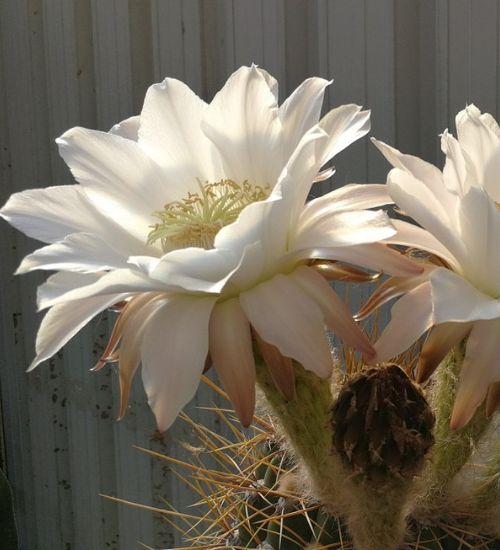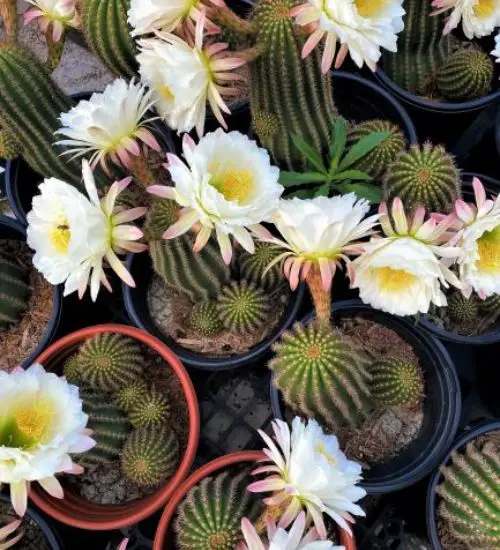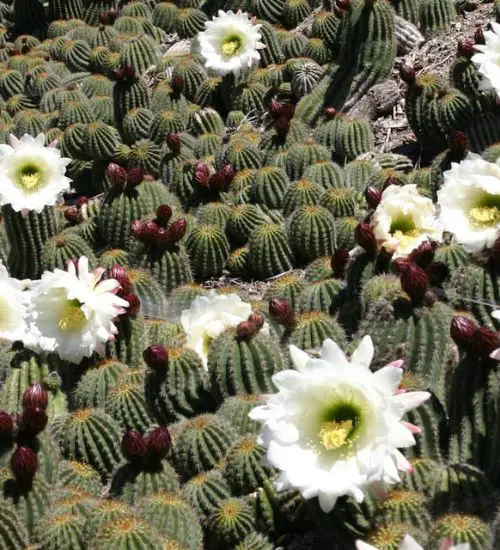Sun: full sun
Water: Typical water needs for a succulent
Temperature: Zone 9b from 25° F to 30° F (-3.9° C to -1.1° C) to Zone 10b from 35° F to 40° F (1.7° C to 4.4° C)
Winter Survival: Cold hardy to 0°C
Propagation: cuttings, seeds
Flower: In the Spring
Flower Type: white
Toxic: Unknown - Tell us
Dormant: winter
Space Requirement: Outdoors
Common Problems: No major pests, Plants may rot if overwatered
Basc Care for Echinopsis (Trichocereus), white
Watering
You can water your succulent more than often in extreme conditions but make sure that the soil is completely dry before watering your succulent again.
One simple tip for you is that you can use some online apps to check the soil status before you go water your succulents. I would recommend the ThePlantsCheck app, it has some nice features there.
Fertilizing
Only feed this succulent during its active growing seasons which means Unknown - Tell us. Use the right fertilizer applied in the right amounts. Applying half-strength balanced fertilizer every month or so is recommended for optimal results.
Do not fertilize during winter as the plant is dormant.
Sun & Location Requirements for "Echinopsis (Trichocereus), white"
Echinopsis (Trichocereus), white needs at least six hours of direct sunlight every day in order to be healthy and happy. Place your succulent outdoors or near a sunny window, and check its leaves regularly – they should be bright green and firm. If the leaves start to look weak or pale, it's an indication that the succulent isn't getting enough sun.
As per this succulent profile, it is only able to stay healthy when the environment temperature is above the range of zone 9b from 25° F to 30° F (-3.9° C to -1.1° C).
Echinopsis (Trichocereus), white is an incredibly resilient species that can survive temperatures as low as 0°F. It has a thick, waxy cuticle that helps protect it from frost damage, and its leaves are able to retain moisture in even the most arid environments. Its deep root system further helps it survive even the coldest winter conditions.
Any succulents in the group will need a large space to grow. You should place your pot outdoor. Since this plant needs a lot of space than other succulents, you should consider not planting them together with other succulents/plants.
Propagation
One way to propagate Echinopsis (Trichocereus), white is by cutting
Growing Echinopsis (Trichocereus), white from seeds is an easy and economical way to produce more plants. Identify a healthy seed by its plumpness, dark color and slightly sticky texture. Once the potting mix has been pre-mixed with well-draining soil, sow the seeds evenly and press lightly into the surface. To ensure germination, keep the container in bright but indirect light and mist the soil gently with a spray bottle.
Toxicity

Pests and Diseases
Echinopsis (Trichocereus), white is not affected too much by common pests and diseases like most of the other succulents.


